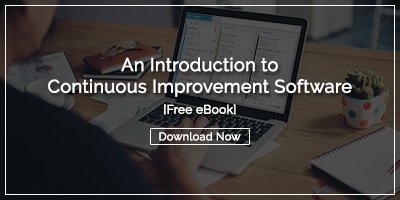 Rapid improvement events are a popular continuous improvement approach with for good reasons. By focusing all of your team’s firepower on one challenge or opportunity for a few days, you dramatically speed the pace of change and increase the chances of successful collaboration and broad agreement on the right actions to take.
Rapid improvement events are a popular continuous improvement approach with for good reasons. By focusing all of your team’s firepower on one challenge or opportunity for a few days, you dramatically speed the pace of change and increase the chances of successful collaboration and broad agreement on the right actions to take.
But not every rapid improvement event is a resounding success. In fact, if not properly executed they can cause more harm than good.
When Rapid Improvement Goes Awry
Here’s why some organizations struggle to get the results they wanted:
- They fail to recognize the importance of what happens before and after the event
- Teams don’t practice effective communication
- Relevant documents are scattered or unavailable
- The impact of the event is impossible or difficult to measure
- People who aren’t directly involved aren’t informed about the event or its results
- Each event does not build on the successes or learn from the failures of previous improvement efforts
- The target for improvement is not aligned with the organization’s strategic goals and priorities
- Opportunities for future improvement are ignored or forgotten
- Employees are not fully committed to the process
How Software Can Help
Rapid improvement software isn’t a panacea, but it can go a long way in preventing some of these common causes for disappointing results. It touches each part of the improvement process and provides support for the activities that drive change.

Event Preparation: Before a rapid improvement event it is essential to gather the team, select a project leader and begin gathering the information needed to understand the current state. Improvement software provides a platform for all of this activity. It will be the home to the project charter and the place to define and control the project roadmap.
Event Follow-up: After the intense burst of activity that occurs during the event, it can be tempting to mark it as “complete” and move on, but in order to secure lasting change, it is important to set up regular intervals for review and reassessment. Rapid improvement software allows for the scheduling of such follow-up so that it doesn’t get lost in the shuffle.
Collaboration: The software becomes a platform for collaboration so that all related communications are captured in one place. Your team has one version of the truth and a common language even if it involves folks from several different departments.
Document Capture: Rather than having some conversations in email and relevant documents on some other server somewhere, when rapid improvement software is implemented, all information is available in one place. Your documents, diagrams, photos, and even video are all just a click away.
Impact Measurement: Rapid improvement events require significant resources, so it is only reasonable that executives and managers want to know if the effort was worth the results. The best improvement software solutions make it easy to calculate the impact of each event.
Improvement Broadcasting: Not every employee in the company will be involved in each improvement event, but it is still important to make sure they are aware of what is happening and involved in celebrating positive results. Software with improvement broadcasting capabilities helps solidify a culture of continuous improvement.
Knowledge Capture: Your team’s improvement efforts should get better over time. Rapid improvement software helps make this a reality by becoming a repository of knowledge for the organization. People can search for similar problems that were addressed in the past. They can research the techniques that have had the best results, and they can avoid traps that have been uncovered before.
Organizational Alignment: The last thing you want to have
Future Opportunity Capture: It is very common for an improvement event targeted toward one problem to uncover more that need to be addressed separately. It is a shame when those opportunities are not immediately documented and are lost. Improvement software makes it easy for employees to submit all of the future opportunities for improvement that they find either during the improvement event or at any other time.
Improved Employee Engagement: The best improvement work happens when people are emotionally invested in the process and the results. This happens when the culture supports this type of effort and recognizes those who do it well. It also is more likely when people feel that the changes positively impact their own work. Implementing software signals to each team member the fact that this work is important, and that management is willing to do what it can to help improve their chances of success. It also brings the results of the work to life by visualizing the impact.
Rapid improvement software doesn’t guarantee success. You still need employees who are trained on the technique and a culture that prioritizes positive change. But implementing a solution that takes on some of the biggest obstacles to a perfectly executed event will go a long way in ensuring long-lasting success.


Add a Comment